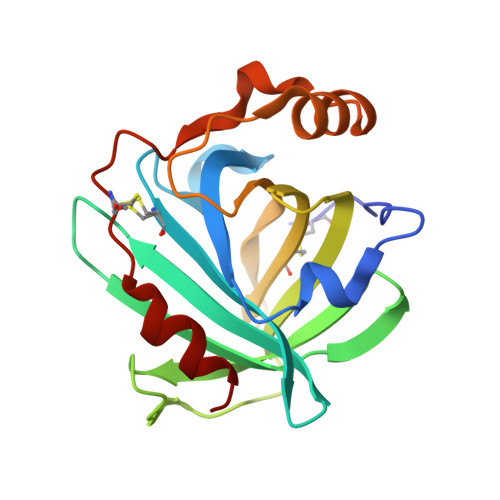Apo-nitrophorin 4 at atomic resolution.
Amoia, A.M., Montfort, W.R.(2007) Protein Sci 16: 2076-2081
- PubMed: 17660249
- DOI: https://doi.org/10.1110/ps.072981907
- Primary Citation of Related Structures:
2OFM - PubMed Abstract:
The nitrophorins from Rhodnius prolixus, the kissing bug, are heme-containing proteins used for the transport of nitric oxide to aide the insect in obtaining a blood meal. The Rhodnius nitrophorins display an eight-stranded antiparallel beta-barrel motif, typical of lipocalins, with a histidine-linked heme in the open end of the barrel. Heme is stabilized in the ferric state and highly distorted, displaying a ruffled conformation that may be of importance in the setting of the reduction potential. To help in understanding the means by which the protein matrix, an inherently soft material, is able to distort the heme from its low-energy planar conformation, we have determined the crystal structure of apo-nitrophorin 4-1.1 A resolution. Removal of the heme from nitrophorin 4 has very little effect on its structure: The heme binding cavity remains open and the loops near the cavity entrance respond to lower pH in the same manner as the intact protein. We conclude that the general stability of the lipocalin fold and apparent rigidity of the beta-barrel provide the means for distorting the heme cofactor.
- Department of Biochemistry and Molecular Biophysics, University of Arizona, Tucson, Arizona 85721, USA.
Organizational Affiliation:

















